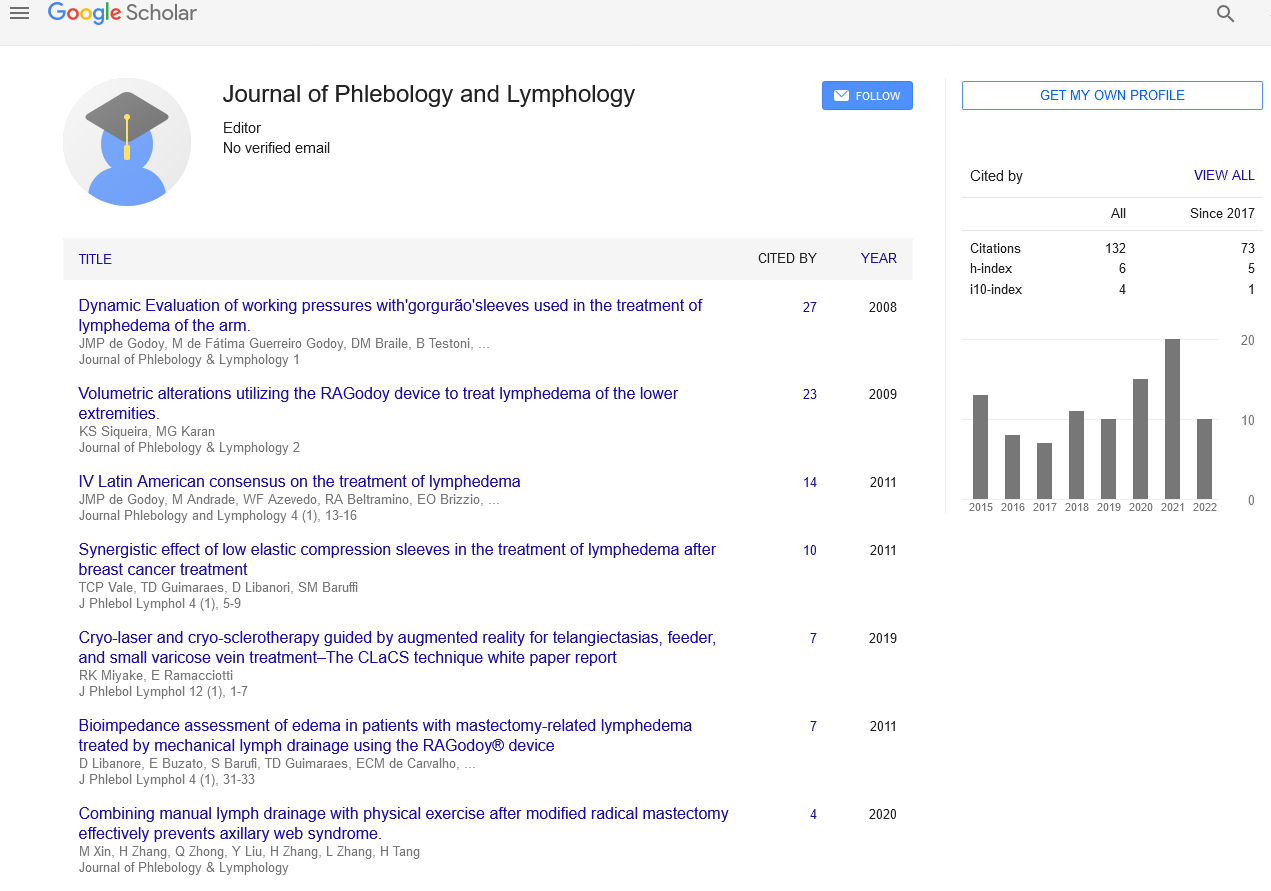Blood Vessels of the Arterial System in Older People
Received: 05-Mar-2022, Manuscript No. PULJPL-22-4691; Editor assigned: 08-Mar-2022, Pre QC No. PULJPL-22-4691; Accepted Date: Mar 07, 2022; Reviewed: 18-Mar-2022 QC No. PULJPL-22-4691; Revised: 23-Mar-2022, Manuscript No. PULJPL-22-4691; Published: 29-Mar-2022
This open-access article is distributed under the terms of the Creative Commons Attribution Non-Commercial License (CC BY-NC) (http://creativecommons.org/licenses/by-nc/4.0/), which permits reuse, distribution and reproduction of the article, provided that the original work is properly cited and the reuse is restricted to noncommercial purposes. For commercial reuse, contact reprints@pulsus.com
Abstract
The lymphatic system is responsible for fluid drainage from almost every organ in the body. It sustains tissue homeostasis and is also a central part of the immune system. With the discovery of cell-specific markers and transgenic mouse models, it has become possible to gain some insight into the developmental and functional roles of lymphatic endothelial cells (LECs). Only recently, a more direct regulatory role has been assigned to LECs in their functions in immunity responses and chronic diseases. Here, we discuss the changes occurring in aged lymphatic system and the role of lymphatic capillaries in some age-related diseases and experimental animal models.
Commentary
The lymphatic system runs almost the full length of the human body. The drainage and unidirectional passage of fluid from the interstitial space into the blood circulation is the responsibility of lymphatic vessels. Unlike blood capillaries, lymphatic capillaries lack a continuous basement membrane and feature "button-like" connections that form loose cell-cell contact. Furthermore, the cell-cell junctions are disjoined and have a distinctive overlapping design that creates flaps that improve permeability, allowing for passive absorption of waste materials and other macromolecules from the interstitium as well as immune cell entrance into the lymph. The tissue-specific features of initiating and collecting vessels in different areas of the body have also been mapped thanks to these research utilising mouse models. In the epidermis, for example, capillaries create a three-dimensional network, whereas lymphatic veins in the lacteals of the gut are tube-shaped and later fuse into the mesenteric collectors. Unlike the circulatory system, which is driven by the heart's constant pumping, the lymphatic system relies on either extrinsic forces such as muscle contractions from the surrounding tissues or intrinsic contraction by the collecting veins themselves to maintain circulation. Endothelial cells also create nitric oxide, which keeps the intrinsic pump active under healthy settings. Lymphatic valves prevent lymph from flowing backwards into the veins. Lymphatic channels convey lymph across the body via lymph nodes, finally emptying the fluid into the subclavian or internal jugular veins via the right lymphatic duct or the thoracic duct, where it rejoins the blood. Proteoglycans and glycoproteins that are linked to the endothelial cell membrane and bind to free-floating plasma proteins and endothelium-derived molecules through their side chains cover the lymphatic endothelial cells (LECs) on the luminal side. The glycocalyx is a protective barrier that consists of a meshwork of proteoglycans and glycoproteins, as well as soluble components linked to their branched side chains. Within the collecting vessels, the glycocalyx thickness and coverage decreases with age. The immune system's lymphatic system is crucial. Immune cells, antigens, and pathogens are transported to draining lymph nodes through this vessel. Although it was once thought to be little more than a passive transporter of immune system components, research over the last two decades has revealed its broad immunoregulatory functions. Lymphatic veins are used by cancer cells to spread throughout the body. A well-functioning drainage system, on the other hand, is critical for a powerful immune response to infections or any other type of stress that affects tissue homeostasis, which can result in abnormally enlarged lymphatic tubes and lymphedema.
Key Words
Transgenic; Lymphatic capillaries; Cell-specific markers; Homeostasis





